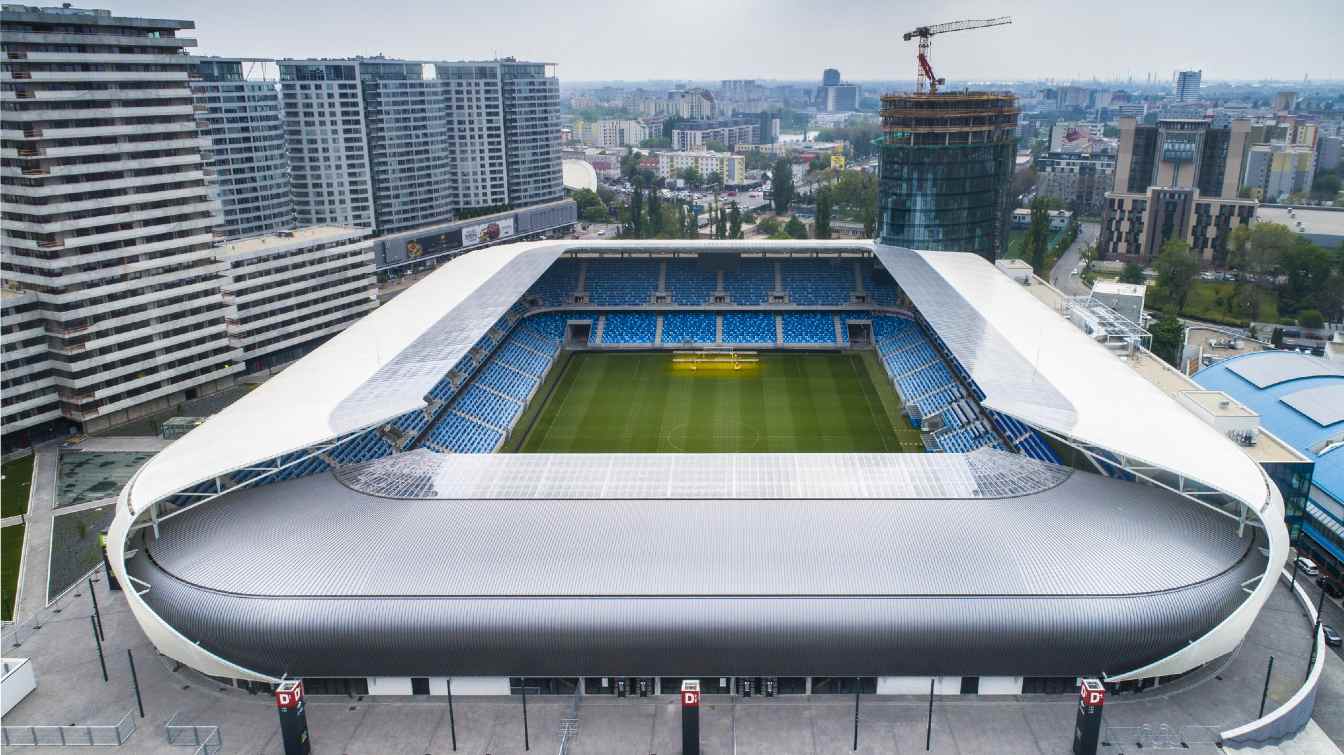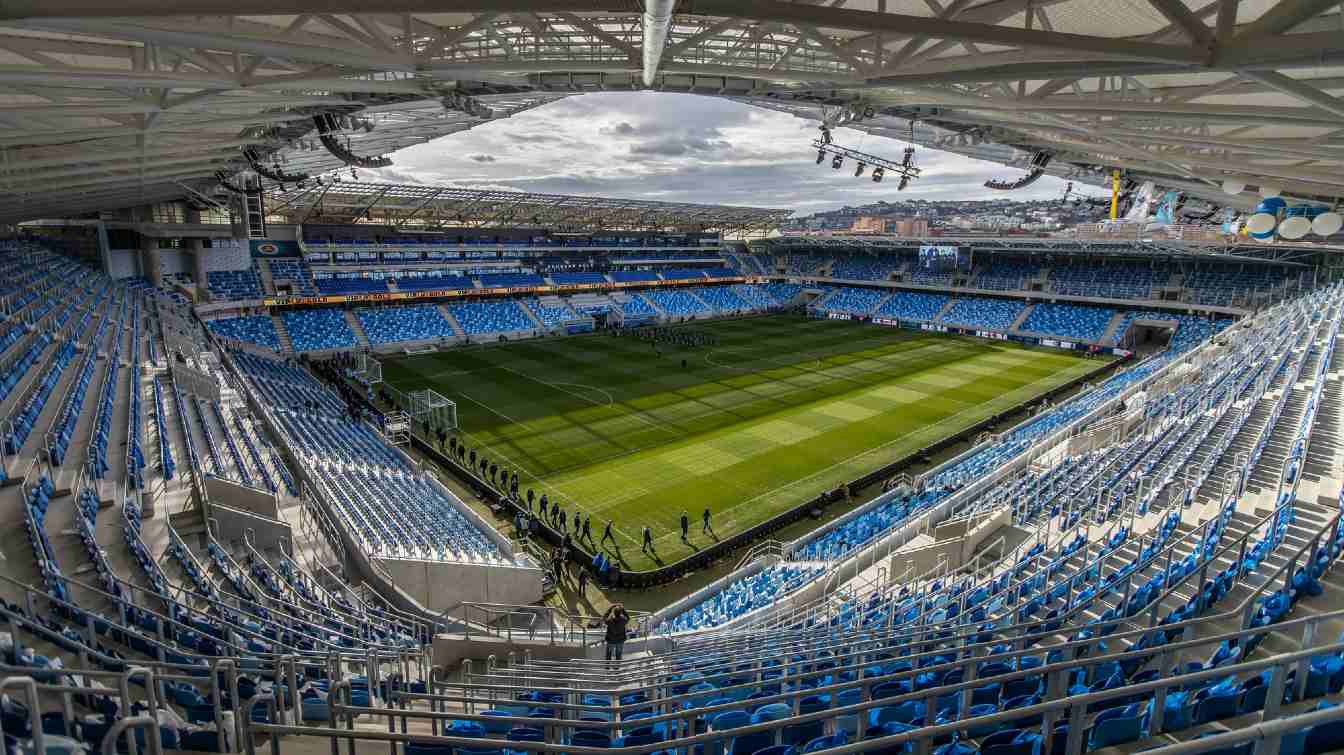Slovakia: National Football Stadium boosts Bratislava’s economy and supports tourism
source: StadiumDB.com; author: Paulina Skóra
 The National Football Stadium (NFŠ) at Tehelné Pole was completed in 2019 and has been a subject of ongoing controversy ever since — due to its location, architectural choices, construction costs, and funding model.
The National Football Stadium (NFŠ) at Tehelné Pole was completed in 2019 and has been a subject of ongoing controversy ever since — due to its location, architectural choices, construction costs, and funding model.
Advertisement
A stadium at the heart of major events
The project was developed by entrepreneur Ivan Kmotrík Sr., who now emphasizes the numerous benefits the stadium allegedly brings to both the city and the state — economically and in terms of tourism. Since opening, NFŠ has become a major venue for both sports and cultural events in Slovakia. The stadium offers 22,500 seats and a total area of 46,000 m². It operates as a multi-purpose complex, hosting not just football matches, but also concerts, public events, and conferences. The stadium’s operator highlights its economic impact and has plans to further expand its functionality.
According to an April 2025 report by expert Pavel Čmelík and a team of investment analysts, the stadium generates nearly €45 million annually for the Slovak economy. Much of that revenue comes from events, space rentals, advertising, and food services. The venue attracts over 430,000 visitors per year, about a third of whom are international tourists.
Visitors to the stadium in Bratislava are surely often looking for other forms of online entertainment, and one of the most popular options is definitely casino games. Visit Polskagra.pl, a website specializing in reviewing and comparing online casinos, and choose the offer that best suits your needs.
Return on investment and public finance impact
In terms of ROI, estimates suggest that every euro of the initial €98.4 million investment should generate €4.56 over a decade. These are modeled figures based on current performance and the assumption that the stadium continues to operate at its current level.
The stadium also benefits public finances, contributing to increased VAT revenue, local taxes, and tourism levies. It’s estimated that NFŠ adds around €8 million a year in this regard. The investor considers the project highly beneficial and sees room for further development. Our goal is to position the National Football Stadium as a safe, multi-purpose venue for all audiences,
said Pavel Komorník, chairman of the NFŠ board. He also expressed ambitions to make the stadium more competitive compared to similar venues across Europe and thereby boost tourism.
 © ŠK Slovan Bratislava / Grafobal Group
© ŠK Slovan Bratislava / Grafobal Group
Infrastructure and multifunctionality
The stadium includes 27 food outlets, a VIP area with 803 seats, 43 skyboxes, and nearly 1,000 parking spaces. It meets UEFA technical standards and required no major upgrades ahead of the upcoming EURO U21 tournament — a rarity among Slovak stadiums.
An integral part of the complex is the OC Tehelko shopping center, which offers dining and commercial services. There are also plans to expand into social and recreational activities in the future.
NFŠ is also presented as an environmentally sustainable facility. According to real estate firm CBRE, it is considered the greenest stadium in Central and Eastern Europe. About 85% of its heating and cooling needs are covered by renewable energy, and the pitch is irrigated using rainwater.
Ownership and financing controversies
Despite its positive image in the media and among users, the project has long faced criticism — particularly around ownership structure and public funding. The stadium was built as a public-private partnership, with the government initially pledging €27.2 million in support. Later, the state intended to buy the non-commercial part of the project, but in 2020 it withdrew from that commitment and demanded the return of the subsidy.
The dispute remains unresolved and is currently under review by Slovak courts. Public debate continues over who should own the stadium and how the financial issues should be addressed. For now, the stadium is operated by a private investor. The projected returns could play a key role in persuading the public that the state should purchase the facility.
 © ŠK Slovan Bratislava / Grafobal Group
© ŠK Slovan Bratislava / Grafobal Group
Social value and future outlook
There’s no denying that the stadium at Tehelné Pole has become a vital part of Bratislava’s urban fabric — both in infrastructure and community life. It has hosted Champions League matches, concerts by international stars, served as a mass vaccination center during the pandemic, and held unique cultural events.
The owner’s goal is to transform it into a sustainable urban arena in both functional and financial terms. Given the state's withdrawal, this is now a strategic necessity. If the stadium fails to remain profitable, it will become a major burden for the owner.
Advertisement

 StadiumDB
StadiumDB